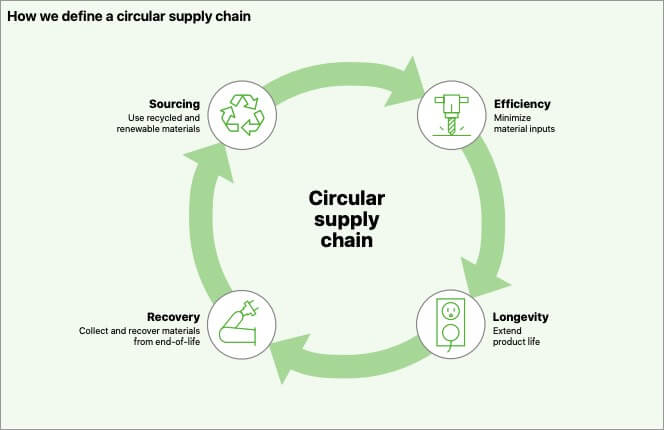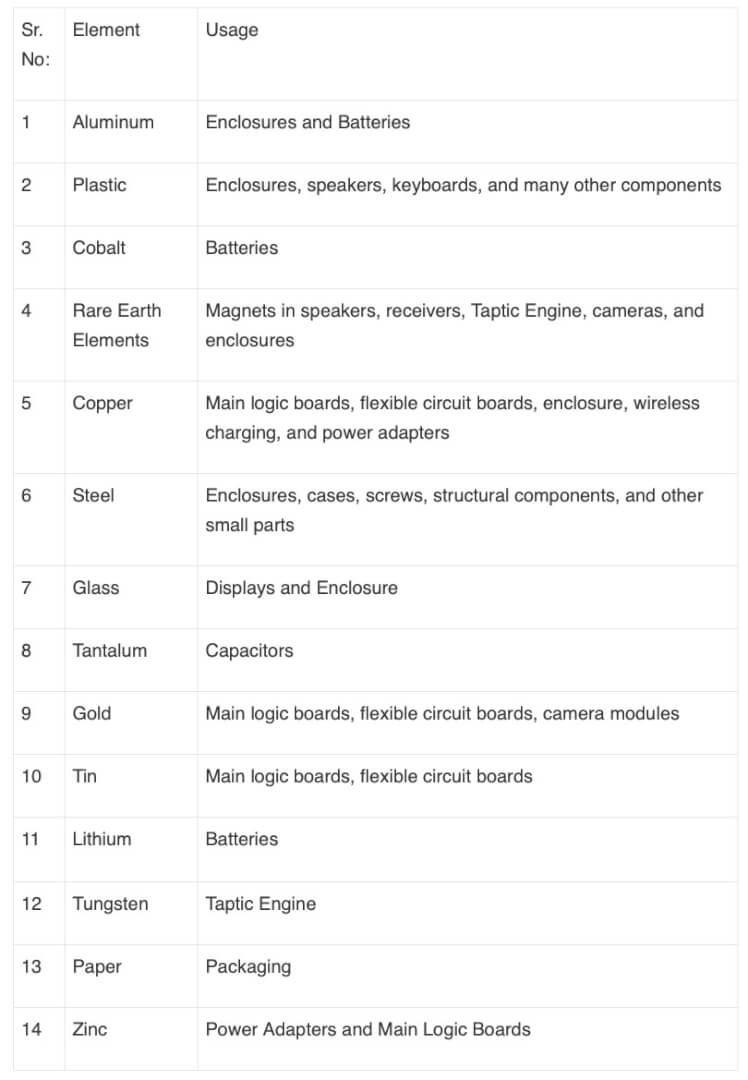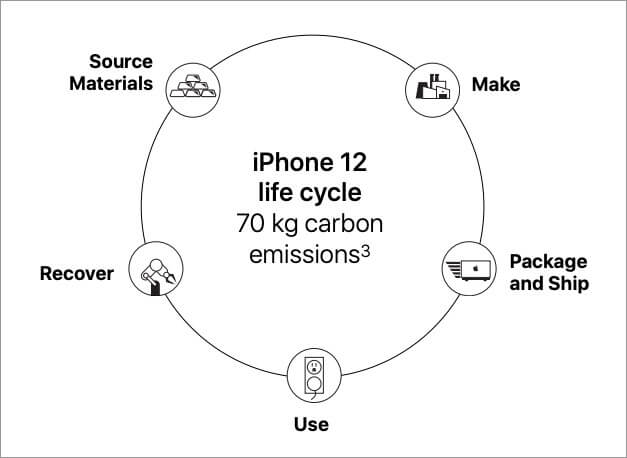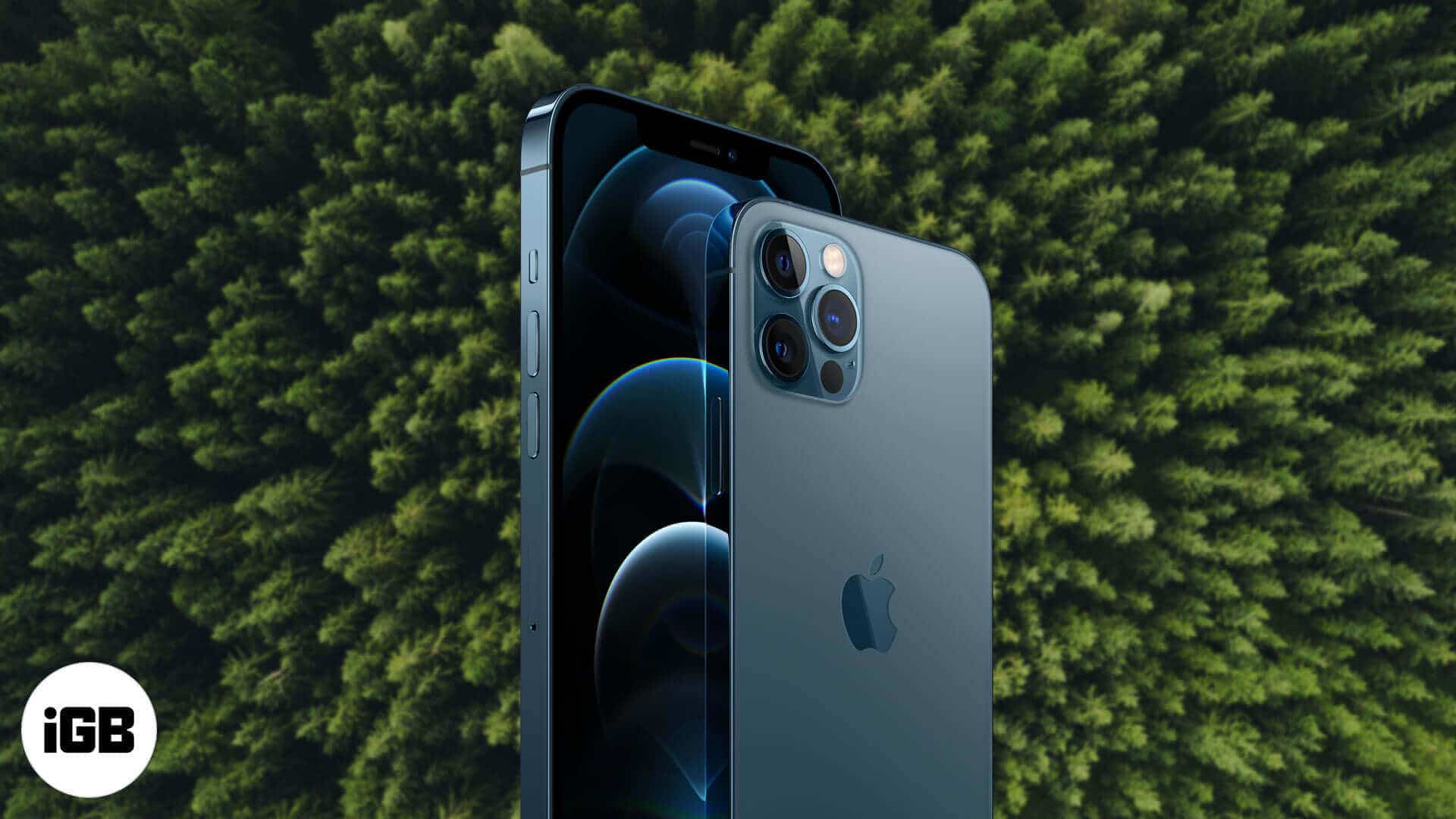Apple’s ‘Hi, Speed’ event gained massive attention with iPhone 12 series and MagSafe accessories. While talking about innovation, Tim also mentioned how eco-friendly the device is.
Well, it wasn’t the first time Apple shared its contribution towards a sustainable future. In the last few years, Apple keeps mentioning its vision to 100% carbon neutral by 2030. However, the question is, ‘going carbon neutral is truth or a hoax to boost its sales?’
I mean why a $2 trillion tech giant will invest a fortune in building a sustainable future? While this might save them money in the future, today, they need tremendous efforts, investment, and commitment.
I’m not much of a Spiderman movie fan, though I have a special place for what Peter’s dad told him once, “With great power, comes great responsibilities.” Don’t you think that the quote well-defines the era in which we live?
While on one side, technology is making our life simpler, directly or indirectly, it is putting-together trouble for the planet we call our home. Hardly there’s a day when we don’t come across a story related to rising global temperature, plastic contaminating our oceans and land, rising atmospheric CO2level, species & ground resources on the verge of getting extinct, and the list goes on.
Let’s try and closely analyze the entire Operandi, followed by the brand to being environmentally friendly.
Who is Responsible for the Depleting State of the Environment?
The fact is both companies, and the users are playing a role in it. Considering that these innovations help us in many ways, creating them can be considered a necessity today. However, doesn’t that become our responsibility to create them in an environment-friendly manner and use accordingly?
Undoubtedly it does. Then what’s stopping?
While the users are getting addicted to the ease, companies don’t want to take any risk in compromising with their current offerings. However, few companies take the risk of bringing the change. These companies look for all possible ways to identify the tiny things that can eventually make a more significant impression to save the planet in the long run.
In a Forbes list of companies for the environment by Industry, unlike its competitors, Apple marked its position at number 16 on the list.
Apple’s Contribution to Saving the Environment
Wondering how it managed to make that place? Or what challenges it would have faced reaching the mark? Let’s try to find an answer to these with steps taken by Apple.
Renewable Energy
Apple reported that all its stores, offices, and data centers located across 44 countries are 100% powered by renewable energy sources. Not just this, on September 3, 2020, Apple announced that it had installed two world’s largest on-shore wind turbines in Denmark. It is expected that they’ll together produce 62-gigawatt energy every year. Having said this, the said power is enough to serve almost 20,000 homes.
The mentioned power will support Apple’s data Center in Viborg, and the remaining energy will go to the Danish grid.
Not just Apple, even its manufacturing partners, have adopted clean energy. Since the launch of this transition, its 72 manufacturing partners, located in 17 different countries worldwide, pledged adherence to this transition.
Going with calculations, if these commitments fall in place, we would be able to circumvent more than 14.3 million metric tons of CO2e annually. This is equal to taking off 3 million cars from the road YoY.
Resources
Considering that hundreds of millions of products are manufactured every year, Apple took the resources pretty seriously with a firm belief that this will deliver a significant change. Hence, it worked on creating a circular supply chain. Let’s understand them individually.

Sourcing and Efficiency
Apple did mention its plans to use only renewable and recycled materials in 2017. And they are making steady progress in the segment. According to the suppliers’ report 2020 issued by Apple, 10% of the total materials shipped in 2019 were made using the same standards. Not just this, the same report reveals that in the four products launched in the preceding year, 17% of the total material used was recycled or renewable.
In the mentioned share, 40% is accredited alone to the MacBook Air. To attain this, the tech giant first closely analyzed and created Material Impact Profiles of 45 elements. Out of which they prioritized 14. Here is the list of products and their respective usage. Now that you know the elements Apple uses and their purpose let’s get to the second stage circular chain.

Product Longevity
Just because they are recycling doesn’t mean they compromise with products’ durability and life. Apple gives a special consideration that their products can withstand some of the unforeseen day-to-day circumstances.
They are designed in a manner that you get the best output of the materials that are used to create them. To further add to longevity, Apple includes numerous features, upgrades in the software, hardware, and high-end repair services.
If we closely look at the journey of any Apple product, we’ll realize how far it has traveled since inception considering features like durability, dust resistance, water resistance, spill resistance, and many others. The devices today come with ratings and certification acclaiming their robust built.
Besides this, Apple also takes its repair services sincerely. Till date, it has more than 5000 AASPs (Apple Authorised Service Providers) and Apple Stores that provide seamless and professional services to its buyers. Apart from these, there are also more than 265,000 independent Apple-trained professionals committed to giving flawless services. Let’s now get to the third and final stage of a product’s journey.
Product End of Life
Let’s accept that no matter how your product is built, how well you maintain, and how efficient are its repair services. There’s a point where a product meets the end of its life. That’s when the question arises; What will happen to the materials used to build it? Apple ensures that once a device doesn’t function anymore, the way it’s supposed to, its accessories, and other parts may still serve a purpose. This is why it recovers all such products and look for a way to use them in the most resourceful manner.
As far as the parts or materials that can’t be reused, they recycle it to use the materials inside. The entire process subsequently helps Apple diminish the wastage and save the environment in the most creative and friendly manner. To perform this vital task, they have an in-house recruited robot, Daisy, at their Material Recovery Lab located in Austin, Texas.
As shared by Apple in the same report, a recycler successfully recovered 1.4 metric tons of copper and gold from Daisy modules. Need to mention, this is equivalent to 150 metric tones of mined ore. Perhaps this further inspired the team to onboard Dave, another robot that can disassemble the Taptic engine to recover steel, tungsten, and rare earth elements.
Smarter Chemistry
Apple follows international design protocols to ensure that the utmost safety is taken while prioritizing manufacturing processes and materials. Having said this, the materials are prioritized based on their sustainability and impact over the long-term. In its 2020 environment report, Apple shared that more than 900 supply chain partners share their chemical information through a dedicated portal. As a result, till the year, they have collected chemical information for more than 45,000 parts.
This smarter chemistry approach focuses on three main areas, including Mapping and engagement, Assessment, and Innovation. If we closely analyze, the mentioned areas are a chronological step to build innovation. Apple keeps the doors open for suggestions from its supply chain partners and maps whether the implications are followed religiously.
The assessment subsequently helps it learn the feasibility of the vision that they have. Once it is affirmative, that’s when the product reaches the market with those materials, under the badge of an innovation.
How the iPhone 12 is Environment Friendly?
Whatever we learned so far applies to all of the products made by Apple. However, at its ‘Hi, Speed’ event, Apple emphasized how the iPhone 12 lineup contributes to environmental safety. Its environment report for the device claimed that this is the first smartphone with 100% recycled rare earth elements in the magnets. But many users still have the question, How iPhone 12 won’t damage the environment? I tried to learn about its materials and production cycle for better understanding. The following chart will help you have a sneak in their production cycle.

The mentioned emissions are calculated using ISO 14040 and 14044 methodology for life cycle assessment and are based on iPhone 12 64GB.
The entire cycle mentioned above goes as per the points we mentioned earlier in the article. The only difference is with the figures. Let’s have a look at some key numbers.
- iPhone 12 is made using 99% recycled tungsten, and 98% recycled rare earth elements.
- The production cycle utilizes 100% renewable energy from the beginning to the end.
- The device is energy efficient. This means it consumes 53% less energy than the battery charging standards set by the US department of energy.
- The smarter chemistry section we mentioned above has its distinct essence here. The iPhone 12 series devices are free from chemicals like arsenic, mercury, brominated flame retardant, PVC, and beryllium.
- While 93% of packaging is done using fiber, 100% of the wood fiber used is recycled. The duo adds commendably to the brand’s vision.
How Is This Beneficial for Users?
Apple has been a risk-taker, and perhaps no other brand can gamble its user-base to bring a change and save the environment. Also, kudos to the buyers that believe in Apple’s vision. However, still, there might be many how this entire thing will benefit the users.
Let’s not forget that our planet is going through a storm of natural calamities every year. These are the result of the disturbance we have created in the name of innovation. Renewable energy and recycling processes eventually play a vital role in subsidizing the damages and giving us a better place to live.
Now and then, Apple would announce to either remove earphones from the package or the adapter. All these steps are part of a more excellent vision. While these things helped the company minimize its packets’ size, they ensured that new buyers don’t have to shell-off a lot of money to buy the missing accessories. To do so, they lowered their prices.
The need is to look at the bigger picture instead of finding minor loopholes based on assumptions. Apple doesn’t come forward and gives clarifications because it has maintained the utmost transparency by releasing annual reports. The only need is to surf through them.
Or maybe you can ask Siri, “How Apple is contributing to saving the environment?” after all, a friend in need is a friend indeed.
READ MORE: –Apple’s First-Ever Laptop: An Origin Story
🗣️ Our site is supported by our readers like you. When you purchase through our links, we earn a small commission. Read Disclaimer.

